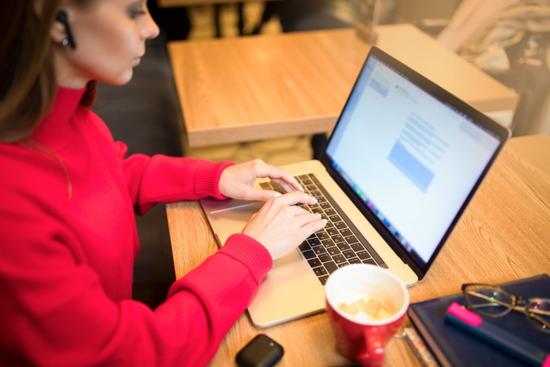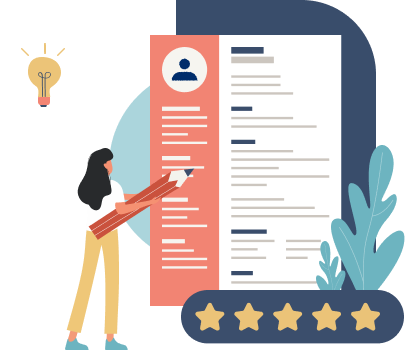How to List Publications on Your Resume (Examples & Tips)

Our customers have been hired at: *Foot Note
Deciding what to include in your resume can be confusing at times. Of course, most job seekers know to include their work history, education and skills, but what about publications?
Listing relevant publications on a resume can help candidates impress hiring managers. The critical aspect is deciding which ones to include, where to include them, and how to do so. In this guide, we'll discuss how to list publications on a resume provide formatting tips and examples of successful resumes with publication sections.
Why Include Publications on Your Resume?
Including relevant publications can boost your resume and show your level of expertise within your field. Publications are particularly significant if you're a writer, researcher or academic. Employers want to see examples of your past work and gauge whether your knowledge and skills are up to par.
But what if you're applying for another role?
The main issue to consider is relevance. The published material you include on your resume must be pertinent to the position you're applying for so that the hiring manager can quickly identify the connection.
Let’s say you’re applying for a social media manager position. Your college research paper on sustainable farming may not apply to the role. However, a published magazine article on innovative content strategies to maximize Instagram's algorithm is an excellent addition to your resume.
When writing your resume, remember it must be concise and tailored to the job position. Only include information that will respond to the employer's needs.
How to Add Publications to Resume
Once you've chosen the publications you want to include, learning how to put publications on a resume is a simple four-step process. Let's start.
STEP 1
Decide Where to Put Publications on Your Resume
There are two main resume sections to choose from:
- Education: If you only have one or two publications, include them in your education section.
- Publications: Create a separate section if you have three or more publications. This will highlight your published work and make it easier for the reader to find.
STEP 2
Follow Formatting Guidelines for Listing Publications
While there are no strict rules to formatting publications on a resume, we suggest choosing one specific citation style and using it throughout your resume. The two most common citation styles are APA and MLA. Follow this format for each one:
- APA citation: [last name], [first initial]. [middle initial]. (year of publication). [article title]. [journal name] [volume number] ([issue number]) [pages].
- MLA citation: [last name], [first initial]. "[article title]" [journal name], [volume number], [issue number], [date], [pages]
Here’s how it should look:
APA:
MLA:
Always include the website URL if the publication is available online.
STEP 3
Use Reverse-chronological Order to List Your Publications
The standard resume format dictates that your work history section follow a reverse chronological order. To ensure your resume is successful, maintain the same structure in your publications list.
STEP 4
Verify Your Information
The last step is to confirm that every title, author name, journal and date is correct. This will display your attention to detail and ensure the hiring manager finds the publication if they want to read it.
Examples of Publications Sections on Resumes
Explore how these resume examples include relevant publications. You can edit them directly in our Resume Builder and tailor them to the position you're applying for.
Ph.D. Student Resume
This sociology Ph.D. student resume uses the APA format to list three publications centered on human behavior and relationships.
Literature Student Resume
This literature Ph.D. student resume effectively showcases their English literature publications using the MLA format.
Listing Co-authored Publications
Publishing books or articles with two or more authors is a common practice. Simply place your name in bold in the citation to draw attention to your byline. Like this:
Common Mistakes to Avoid When Listing Publications on a Resume
- Inconsistency in citation style: As with every other section in your resume, consistency is key. Ensure all your citations are in the same format.
- Irrelevant publications: A resume must be brief and to the point. Limit your resume length by only including publications relevant to the role.
- Outdated publications: Most publications, especially research papers, must be updated after five years. Remember to update your publications section regularly.
Integrating Publications With the Rest of Your Resume
Your publications section is just one way to showcase your contributions to the field. Consider highlighting your publications in other ways:
- Mention them in your resume summary: Publishing a book or an article is an accomplishment! Include them in your resume summary to quickly impress the hiring manager.
- List related achievements in your professional history: If your research or journal article positively affected your job, include it in your work history.
- Add any award or honor related to your publications: You can create a separate section for awards and accolades and list your award-winning publications.
Key Takeaways
- Listing publications in your resume shows you're an active participant in your field and have expert language and analytics skills.
- Relevance is the key to deciding whether to include publications. Only include publications pertinent to the role and address the employer's needs.
- There are two places to list publications: the education section and the publications section. The general rule of thumb is to keep publications in the education section if you have two or fewer.
- When formatting your publications, choose between APA or MLA format and maintain it throughout your resume.
- Always list your publications in reverse-chronological order and confirm the correct information.
FAQ
Do Publications Look Good on a Resume?
Publications relevant to the role you’re applying for look good on your resume. It demonstrates you’re an expert in your field and have excellent communication skills. If you’re a recent graduate with little experience, listing your publications boosts your resume and can showcase your technical skills.
The critical thing to remember is that the publications must be relevant to the job. If not, it’s occupying valuable space on your resume.
How Do You List Publications with Many Authors on a Resume?
Cite your publication in your chosen format and include all the authors who contributed to the piece. Ensure your name is in bold to help the employer identify your contribution. Here’s how it should look:
- Nieves, D., Williams, S. & Brown, V. (2022). How AI is Reshaping Art Creation and the Art Selling World. International Journal of Art and Design, 33(7), 20-26.
What if There’s no Room to List my Publications in my Resume?
Keep your resume to one page unless your professional history expands over 10 years. If a publications section doesn’t fit on your resume, consider mentioning the most influential publication in your professional summary. Your education and work history sections also allow you to include your publications.
How We Reviewed This Article
Since 2012, we have helped more than 11 million job seekers. We want to make your career journey accessible and manageable through our services and Career Center’s how-to guides and tips. In our commitment to bring you a transparent process, we present our Editorial Process.
Our customers have been hired at:*Foot Note











